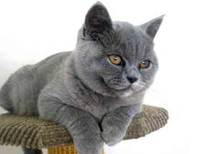Most expensive breeds of cat

There are around 8 million cats in the United Kingdom – approximately 20% of all households have at least one cat. They’re graceful animals – real cat lovers would argue that they’re much more so than dogs. With so many cats in the country they’re a daily sight for most of us – whether it’s an ill-tempered ginger tomcat that lives on your street, or a black cat crossing your path, you’re likely to bump into a couple. But let’s investigate some of the rarer – and more expensive – breeds of pet cat in the world.
British short-hair
A big, cuddly cat, the British short-hair comes from the UK and is a popular pedigree. After a population dip in the 1950s, they have become more common. They’re popular because they’re a national institution, because of their affection yet independent personalities, and because their short hair and bull-doggish demeanour makes them stand out against other, slinkier show-cats. At up to and over £500 for a young pedigree they’re a bit more than the average moggy.
Scottish fold
Another breed which originated in the United Kingdom, the Scottish fold is now rarely seen on these shores, but is very popular in the USA. They’re named after their distinctively folded ears – this is a natural mutation that’s part of the breed’s DNA. The Scottish fold, like many pedigree breeds with unique genetic features, can sometimes exhibit higher incidences of other abnormalities, and its folded ears may cause a Scottish fold cat some hearing difficulties. Scottish folds are known to be soft-tempered and quiet cats – they don’t vocalise as much as some other varieties. These are in a similar price range to British short-hairs.
Russian blues
Named after the remarkable colour of their coats and the country of their supposed origin, Russian blue cats have short but luxurious bluey-silver coats. The original line has been interbred with Siamese cats in order to keep it viable, but most Siamese traits have now vanished and Russian blues are back to how they looked hundreds of years ago. Blue cats are considered lucky in Russia, and indeed Russian blues may prove lucky for people who have allergic reactions to cats, as they seem to cause fewer reactions. Pedigree, breedable Russian blues cost into the thousands of pounds.
Spyhnx
You may have seen photographs of these “hairless” cats. They’re not truly bald, as they have a fine covering of downy fur which actually makes them quite pleasant to stroke despite their striking appearance. The Spyhnx is a modern breed – the first of this type of cat only arrived in the United Kingdom in 1988. Spyhnx make very engaging pets – not only do they look unlike other breeds of cat, they’re very smart, will vocalise in response to speech, and will demand a lot of attention from their owner. For a pedigree Spyhnx you could find yourself forking out more than £2,000.
The Co-operative offer specialist policies for cat insurance, ensuring that your precious cat is well cared for in the event of illness or injury.




